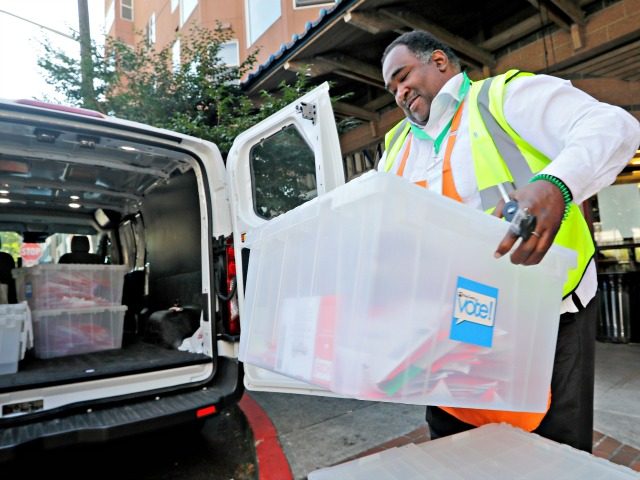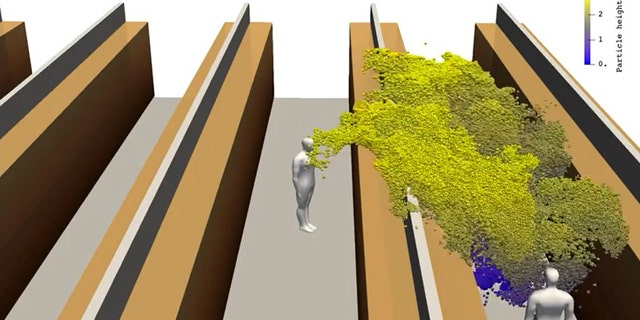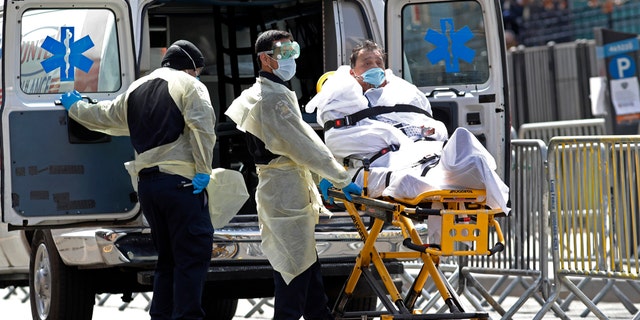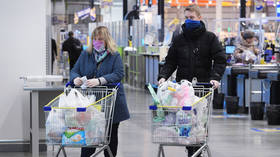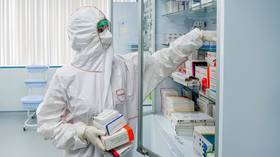https://principia-scientific.org/the-cdc-confesses-to-lying-about-covid-19-death-numbers/
Can any government statistics on COVID-19 deaths be trusted?
It is an open question now that we are learning that the highly respected, world-class Centers for Disease Control and Prevention (CDC) has been lying to us.
This revelation comes a few days after I wrote here at American Thinker that New York City was lying about COVID-19 deaths. The normal rules about reporting deaths have been violated by that city in the rush to inflate the body count, presumably to steer more taxpayer money to the Big Apple.
That the CDC isn’t telling the truth to Americans is no conspiracy theory: it’s right out there in the open for everyone to see. The CDC openly admits that it is fudging the COVID-19 death figures.
We know this because, among other truth-tellers, a plainspoken small-town physician from Kalispell, Montana, has pulled back the curtain.
Dr. Annie Bukacek, MD, explained in a presentation how death certificates are made. (See “Montana physician Dr. Annie Bukacek discusses how COVID-19 death certificates are being manipulated,” YouTube, April 6)
Why should anyone care how a certificate of death is made?
Everyone should care “today when governments are making massive changes that affect our constitutional rights and those changes are based on inaccurate statistics,” Bukacek says.
The system is deeply flawed, she argues.
Few people know how much individual power and leeway is given to the physician, coroner, or medical examiner, signing the death certificate. How do I know this? I’ve been filling out death certificates for over 30 years.
More often than we want to admit, we don’t know with certainty the cause of death when we fill out death certificates. That is just life. We are doctors, not God. Autopsies are rarely performed and even when an autopsy is done the actual cause of death is not always clear. Physicians make their best guesstimate and fill out the form. Then that listed cause of death … is entered into a vital records data bank to use for statistical analysis, which then gives out inaccurate numbers, as you can imagine. Those inaccurate numbers then become accepted as factual information even though much of it is false.
This has been the way it has been done for some time, Bukacek says.
So even before we heard of COVID-19, death certificates were based on assumptions and educated guesses that go unquestioned. When it comes to COVID-19 there is the additional data skewer, that is –get this— there is no universal definition of COVID-19 death. The Centers for Disease Control, updated from yesterday, April 4th, still states that mortality, quote unquote, data includes both confirmed and presumptive positive cases of COVID-19. That’s from their website.
Translation? The CDC counts both true COVID-19 cases and speculative guesses of COVID-19 the same. They call it death by COVID-19. They automatically overestimate the real death numbers, by their own admission. Prior to COVID-19, people were more likely to get an accurate cause of death written on their death certificate if they died in the hospital. Why more accurate when a patient dies in the hospital? Because hospital staff has physical examination findings labs, radiologic studies, et cetera, to make a good educated guess. It is estimated that 60 percent of people die in the hospital. But even [with] those in-hospital deaths, the cause of death is not always clear, especially in someone with multiple health conditions, each of which could cause the death.
Bukacek refers to a March 24 CDC memo from Steven Schwartz, director of the Division of Vital Statistics for the National Center for Health Statistics, titled “COVID-19 Alert No. 2.”
“The assumption of COVID-19 death,” she says, “can be made even without testing. Based on assumption alone the death can be reported to the public as another COVID-19 casualty.”
There is a question-and-answer section on the memo.
One question is, “Will COVID-19 be the underlying cause?”
The answer is: “The underlying cause depends upon what and where conditions are reported on the death certificate. However, the rules for coding and selection of the underlying cause of death are expected to result in COVID-19 being the underlying cause more often than not.”
Another question is, “Should ‘COVID-19’ be reported on the death certificate only with a confirmed test?”
The answer is:
“COVID-19 should be reported on the death certificate for all decedents where the disease caused or is assumed to have caused or contributed to death.” [Boldfacing in original]
“You could see how these statistics have been made to look really scary when it is so easy to add false numbers to the official database,” Bukacek says. “Those false numbers are sanctioned by the CDC.”
“The real number of COVID-19 deaths are not what most people are told and what they then think,” she says.
“How many people have actually died from COVID-19 is anyone’s guess … but based on how death certificates are being filled out, you can be certain the number is substantially lower than what we are being told. Based on inaccurate, incomplete data people are being terrorized by fearmongers into relinquishing cherished freedoms.”
It’s hard to argue with what Dr. Bukacek says, but no doubt angry social media mobs will find a way as her chilling words enlighten the populace that has been bullied into submission.
Of course, the disease’s body count is not the sole concern we should have about the Chinese contagion, but it is undeniably the primary driver of the rampant mass hysteria that has allowed state and local governments across America to crush our cherished civil liberties.
As they say in newsrooms: if it bleeds, it leads. Deaths are always going to be more “sexy” than confirmed cases. It is the number that really, really counts, and Americans know this.
The fraudulent death statistics also give ammunition to the legions of snitches and scolds who try to shame their fellow Americans for attending church or playing catch in an empty park or taking a harmless drive in the countryside to prevent themselves from going stir-crazy.
The fake death data from the CDC, coupled with wild guesstimates from experts, and the relentless barrage of fear porn the mainstream media subjects Americans to around the clock, have been getting results, even with a plague that is, so far at least, underperforming.
First, experts told us 2.2 million Americans would die. Then the number fell off a cliff, plunging down to around 200,000.
As of April 8, the number of those expected to die from the disease by August 4 was down to 60,000, or roughly a very nasty flu season. The new figure comes from the influential model produced by the University of Washington that the White House regularly cites.
Has social-distancing, wearing face masks, hosing down packages with bleach, using hand sanitizer that is at least 60 percent alcohol, and washing hands with soap and water for a minimum of 20 seconds helped bring the grim worst-case-scenario body count down?
Probably, I’m guessing, but it’s hard to know for sure.
Maybe those epidemiological modelers can be forgiven for scaring the bejeezus out of Americans. Epidemiology is not, after all, an exact science, as its practitioners sometimes acknowledge.
But those who have force-fed modelers skewed data that led to the terrifying death forecasts that stampeded governors into pushing the nation down the road to totalitarianism need to be held to account.
Let the investigations begin.
Read more at www.americanthinker.com
Recommend this post and follow TCW



